Duke Ellington was riding particularly high in 1963. In January he embarked with his orchestra upon a highly successful European tour through the United Kingdom, France, Scandinavia and Germany. Simultaneously he was enjoying the perks of a recording contract with Frank Sinatra
's
new Reprise label which gave him complete control over his own recordings; even more, he was given the unusual authority to produce sessions for other artists as he travelled around Europe. A
head of him lay a unique opportunity to write, produce, and direct his own show. During January in Sweden, b
etween performances with symphony orchestras, in hotel suites, or in the passenger seat of a white Volvo Amazon Sport, he wrote much of My People
, an engagement commissioned by the Century of Negro Progress Exposition in Chicago
.
But by the time the band returned home in June, they found a nation much changed from the one they had left only a few months before.
When I first went to work in the McCormick <sic> Theatre, I was knocked out by the size of the stage. I sat in the front row of the orchestra seats and looked up at the stage, to get the audience's view... I sat and looked for a while, and then came up with an idea to fill this big stage... We would extend the sixteen-piece band just back of an apron... Behind the band we would have an elevation twelve feet high which would be carried all the way back to the back wall. On either side would be stairs running down behind the band.For the opening, I would have a boy and a girl dancing at the extreme back end of the elevation-- a sort of Afro dance. Then black out, fade up to green as backdrop silhouettes the dancers; fade up amber cross lights at the point where the boy is doing the head-rolling thing, a la Geoffrey Holder; slow fade to black and first slowly cross orchestra pit, with ambers, purples, and reds, and then quickly bright up. Instead of two tiny figures in the distance, the audience was suddenly looking at forty-eight giant hands rising up out of the dark, towering over them on the orchestra pit elevator. Some were shocked by the silhouette and even cried out in fright. Thanks to Ailey and Beatty, Ellington had achieved a choreographic masterpiece on his maiden voyage.
To understand My People in the context of Ellington's oeuvre, one must travel back in time. In a sense, My People was his latest attempt to express a narrative that was forever ahead of its time. As far back as the 1930s, Ellington's aim in music had been to tell the story of his race in a larger format. Early in that decade he had recorded "Creole Rhapsody" and a few years later "Reminiscing in Tempo," both of which ran beyond the three-minute limit placed upon almost all jazz records. At the same time he envisioned an opera, entitled Boolah after its protagonist, which purported to tell the history of the African American race.
A rare breakthrough at Paramount studios in 1935 afforded Ellington an opportunity to produce a short film, Symphony in Black, whose musical themes-- "The Laborers," "Triangle," "A Hymn of Sorrow," and "Harlem Rhythm"-- were to serve Ellington for decades to come.
For the opening, I would have a boy and a girl dancing at the extreme back end of the elevation-- a sort of Afro dance. Then black out, fade up to green as backdrop silhouettes the dancers; fade up amber cross lights at the point where the boys are doing the head-rolling thing a la Geoffrey Holder; slow fade to black, and first slowly cross orchestra pit with ambers, purples, and reds, and then quickly bright up. Instead of two tiny figures in the distance, the audience was suddenly looking at forty-eight giant hands rising up out of the dark, towering over them on the orchestra-pit elevator. Some were shocked by the silhouette and even cried out in fright. Thanks to Ailey and Beatty Ellington created a choreographic masterpiece on his maiden voyage.
The ensuing "Will You Be There" and "99 Percent Won't Do" continue the spiritual theme, featuring first a dramatic chorale behind a male narrator followed by an old-fashioned gospel shout by the choir. Still further, the religious motif continues with "Ain't But the One," rendered in a faster vein, with a vocal by Jimmy McPhail, accompanied by a great band arrangement. To conclude the religious arc, "David Danced Before the Lord" featured tap-dancer Bunny Briggs over a snappy version of "Come Sunday," first sung and then hummed in accompaniment.
The religious theme that dominates the show's opening reflects Ellington's past , of course, but it also forecasts the series of Sacred Concerts he produced for the remainder of his life, which he considered the music for these concerts the most important he had ever done. It is no coincidence that these early songs from My People, including "David Danced" and "Come Sunday," formed the core of Ellington's first Sacred Concert two years later.
Then comes a final backward glance with a celebration of Duke Ellington's family. "Heritage" has one of Billy Strayhorn's's most sumptuous arrangements and a wry lyric deliciously interpreted by Joya Sherrill. After a brief trombone introduction, it begins with a short spoken narration over Strayhorn's celeste. Joya is here joined by the orchestra:
By the very best people in the land.
From sun to sun, our hearts beat as one
My mother, my father, and love.
 |
| Joya Sherrill |
 |
| Timuel Black |
The morning Tribune noted that one speaker declared, "More progress toward complete acceptance has been made by the Negro in the last nine years than in the 335 years since 1619, when he arrived in North America and shackled by the chains of slavery." It seemed somehow that the historical process of the past century had been reduced to months, weeks, days. The centennial of Emancipation embraced the ongoing struggle against segregation. Even as the Century of Negro Progress Exposition was becoming a staging area for a national civil rights action, the word "Negro" was itself rapidly losing its dignity and usage.
Five score years ago, a great American, in whose symbolic shadow we stand today, signed the Emancipation Proclamation. This momentous decree came as a great beacon light to millions of Negro slaves who had been seared in the flames of withering injustice... But one hundred years later, the Negro still is not free. One hundred years later, the life of the Negro is still sadly crippled by the manacles of segregation and the chains of discrimination. One hundred years later, the Negro lives on a lonely island of poverty in the midst of a vast ocean of material prosperity. One hundred years later, the Negro is still languished in the corners of American society and finds himself in exile in his own land.
On the subject of color, we had a little girl tell the story of the green people and the purple people... who fought and fought till they both won and lived in a state of monotony since they both felt they had won an empty victory. So they both fought until they both lost. They were all dead, and there was blood everywhere, no purple blood, no green blood, it was all red... After the little girl finished telling her story, we had Joya Sherrill come out and say, 'We finally got on to the subject and we're sorry. We tried to hold it back as long as we could so we're going to discuss color now.' And then we had her sing 'What Color Is Love, What Color Is Virtue?'
As for My People, there was still one epilogue. In 1997 Barbara Wright-Pryor, formerly a member of Irving Bunton's chorus in the 1963 production, helped to revive the show at the New Regal Theater on Chicago's South Side. "I was privileged to restage his 1963 musical revue, My People, with Mercedes Ellington,"she said, as stage director and choreographer. "It was my responsibility to pull together the singers, the dancers, the entire production, which I remember virtually from beginning to end." Dr. Robert L. Morris of the Leigh Morris Chorale of Minneapolis joined as choral director. The process of recreating the libretto took eleven months.
- Duke Ellington, My People (Contact, 1965)
 |
 |
| Red Baron LP |
 |
| My People recording session; l. to r.: Duke Ellington, Billy Strayhorn, and Tom Whaley |
 |
| Flying Dutchman LP |
 |
| Boplicity CD reissue of the original LP |
- Sarah Vaughan's Golden Hits (Mercury, 196?)
- Sarah Vauhan, The Singles Sessions (Roulette, 1990 CD compilation)
- The Chi-Lites, 20 Greatest Hits (Brunswick, 197?-197?)
NEXT: Yet More About The Beach Boys








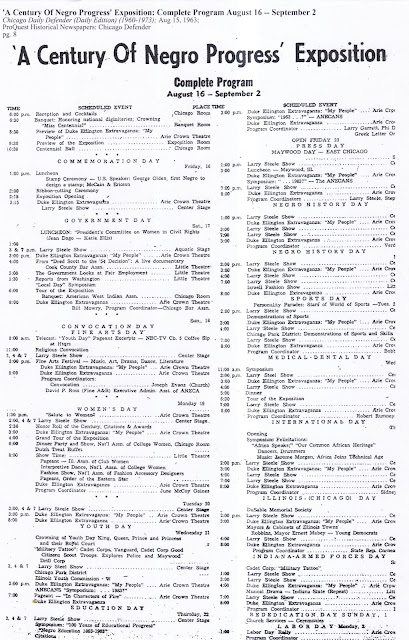

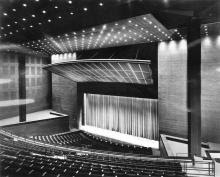






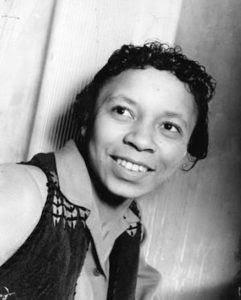








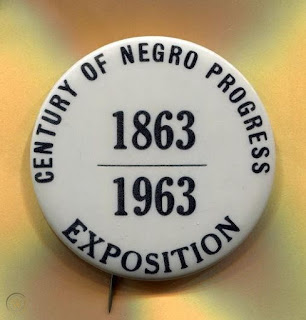
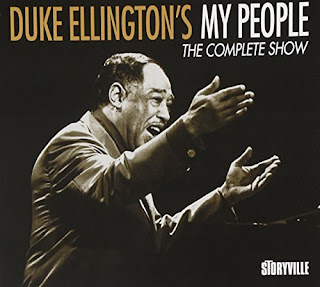





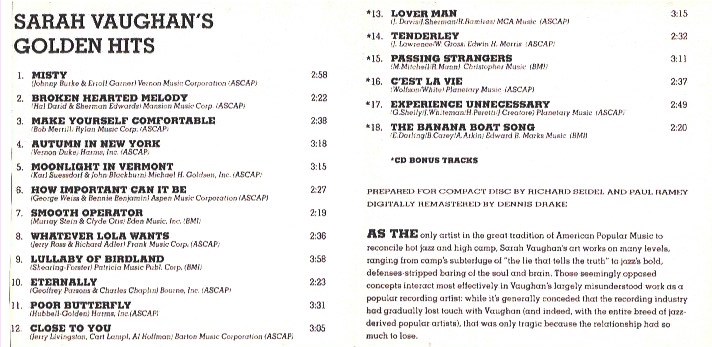







This is a Caine masterpiece.
ReplyDelete